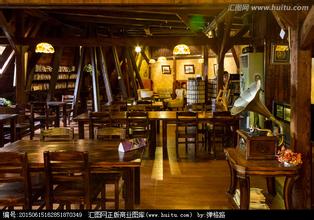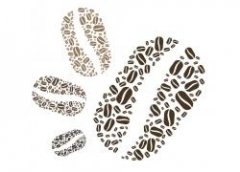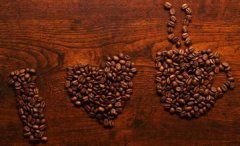A brief introduction to the description of the balanced and soft flavor of Salvadoran Himalayan coffee

Central American countries generally distinguish quality grades by altitude, such as Costa Rica, Guatemala, Mexico, Honduras and other countries. Similarly, El Salvador is graded by altitude. At high altitudes, due to the cold climate and slow coffee growth, the density of raw beans will be higher, the hardness will be stronger, the unique acidity of Arabica will be better, and of course the better the quality will be. Therefore, the higher the altitude of coffee growth, the better the flavor, on the contrary, the lower the altitude, the higher the temperature, the faster the growth rate, the lower density, the lower hardness and the worse quality of raw beans.
So much for the introduction of Savaldo, so let's go back to the original topic: what surprised me?
The first El Salvador to drink is washed beans, medium-shallow baked, warm and gentle, smooth entrance, sour and sweet mellow thickness are very regular, do not have too prominent flavor characteristics, so do not leave too much impression. But the flavor of tanning El Salvador becomes very recognizable and amazing. After grinding, the dry aroma gives off a pleasant tropical fruit aroma, followed by steaming, extraction, and until the end, a steady stream of jackfruit aroma. As soon as the extraction is over, I can't wait to take a sip. Strawberries, brown sugar, faint spices, and then two more sips, the creamy taste can be described with an advertising phrase-"silky at the moment." . This country is a small coffee-producing country, which is very suitable for honey treatment and solarization. On the whole, honey treatment and sun treatment have also given a new soul to El Salvador. The long-lasting taste is rich, sweet and sour, chocolate, unique tropical fruit notes, let people remember deeply.
El Salvador was originally inhabited by the Mayan Indians.
Scenery of the Republic of El Salvador
Scenery of the Republic of El Salvador (11)
It was colonized by Spain in 1524.
Independence was declared on September 15, 1821 and later became part of the Mexican Empire.
In 1823 the empire collapsed and El Salvador joined the Union of Central America.
The Republic was proclaimed on February 18, 1841 after the disintegration of the Union in 1838.
Since the 1930s, soldiers have launched coups many times, and the political situation has been in turmoil for a long time.
Martinez became vice president and defense minister in 1931, during the Great Depression, political corruption and the rapid expansion of the influence of the Communist Party of El Salvador. Arturo Araujo was forced to step down and nominated Martinez as the next president.
In January 1932, local elections began, and a large number of Communist Party candidates were elected, but they were not recognized by the government; the Communist Party of El Salvador decided to launch an uprising on the 22nd, but Martinez discovered it and immediately ordered the arrest of Communist Party leader Farah Bendo Marty. The leaderless farmers, armed with machetes, launched the uprising as scheduled, but failed under the crackdown by government forces, which immediately retaliated and slaughtered more than 30,000 rebellious farmers.
For 13 years after 1932, El Salvador was ruled by Martinez.
On May 19, 1934, El Salvador announced the establishment of diplomatic relations with Manchukuo, becoming the second country after Japan to recognize the regime.
After the outbreak of the Pacific War in 1941, El Salvador joined the anti-axis camp of Britain, the United States and other countries.
In April 1944, intellectuals and students launched a general strike because of economic paralysis.
In May 1945, Martinez stepped down, went into exile in Guatemala and then went to live in Honduras.
When the reformist revolutionary junta came to power in 1979, both the far right and the far left were dissatisfied with the government, and the conflict broke out and turned into a civil war.
In 1980, a formal civil war broke out in El Salvador, confronting the United States-backed government and the Cuban-backed Farabundo Marti National Liberation Front.
On January 16, 1992, the Marty Front signed a "peace agreement" with the government, ending the 12-year civil war in El Salvador.
In March 2014, the second round of voting in the presidential election was held in El Salvador. Vice President El Sanchez Salem, candidate of the ruling Marty Front, won with 50.11% of the vote and was sworn in on June 1. For a term of five years, don't underestimate El Salvador's coffee production. In its heyday, it was once the fourth largest coffee producer in the world, but decades of civil war almost dragged down the coffee industry. fortunately, the war has stopped in recent years, and the coffee industry has come back to life. The only benefit that the civil war brought to the Salvadoran country was that the farmers' fields were barren and failed to catch up with the most popular Katimo exposure train in the past two decades, thus preserving the ancient varieties of bourbon and Tibica, that is to say, El Salvador still uses the most traditional shading method to plant coffee, which is positive for coffee flavor. In 2005, the Salvadoran mixed-race variety Pacamara boasted in coe, which confused many international cup testers and did not know how to score it. They never expected that this hybrid bean not only broke the mellow boundary of coffee, but also expanded the visibility of Salvadoran coffee. El Salvador boutique coffee is concentrated in the volcanic areas of Santa Ana in the west and Charantan fruit in the northwest. In recent years, the top 10 cup tests are almost entirely from these two producing areas, with an altitude of about 9-1500 meters above sea level, mainly bourbon (68%), followed by Pacas (29%). Mixed-race Pakamara, Durai and Kaddura accounted for only 3% of the coffee harvest season from November to March of the following year. The fresh fruit of coffee is picked by hand. Coffee in El Salvador is grown mostly by small farmers, who grow it in the traditional way: almost 100% shade. The coffee harvest lasts from November to March. In general, Salvadoran coffee inherits the mild quality of Sino-American coffee, with soft, slightly sour and beautiful sweetness. At the same time, it also has its own characteristics: the aromatic taste is slightly sour and very soft; it is pure and has no miscellaneous flavor, and the taste balance is excellent; the smooth feeling like cream chocolate is impressive; the dense feeling of coffee in the mouth gives the coffee a deep taste and a long finish.
El Salvador's coffee accounts for 40% of the country's exports, and it is usually picked in November, December and January-March of the following year. The export of raw beans lasts almost all year round. Coffee is produced in seven of the country's 14 provinces, with the largest number in the northwestern provinces of chalatenango and santa ana. El Salvador produces 100% Arabica coffee, 68% of which is bourbon, which usually grows at an altitude of 1062 Mel 1972 meters. On the other hand, El Salvador has a unique mountain, river and plateau, which provides a suitable environment for the growth of bourbon coffee. At the same time, El Salvador's suitable temperature, abundant precipitation and fertile soil are also indispensable natural conditions for breeding high-quality coffee beans. Like other typical island beans, Salvadoran coffee is balanced, soft and good in texture.
Important Notice :
前街咖啡 FrontStreet Coffee has moved to new addredd:
FrontStreet Coffee Address: 315,Donghua East Road,GuangZhou
Tel:020 38364473
- Prev

A brief introduction to the treatment method of Grinding scale and Baking degree of Fruit-flavored Coffee
These mountain villages are foggy, like spring all year round, with a gentle breeze in summer, cool but not hot, rain but not damp, and no cold damage in winter, giving birth to a unique regional flavor of citrus and flowers. Coffee trees are mostly planted in farmers' own backyards or mixed with other crops in the fields. Yega Xuefei is a by-product area of Sidamo province in Sidamo, Ethiopia, which is located in the northwest of Sidamo.
- Next

A brief introduction to the history and culture of the origin and development of Salvadoran Himalayan coffee
Don't underestimate El Salvador's coffee production. In its heyday, it was once the fourth largest coffee producer in the world, but decades of civil war almost dragged down the coffee industry. fortunately, the war has stopped in recent years, and the coffee industry has come back to life. The only benefit that the civil war brought to the country of El Salvador was that the farmers left their fields barren and failed to catch up with the most popular Katimo sun-exposed cultivation train in the past two decades.
Related
- Detailed explanation of Jadeite planting Land in Panamanian Jadeite Manor introduction to the grading system of Jadeite competitive bidding, Red bid, Green bid and Rose Summer
- Story of Coffee planting in Brenka region of Costa Rica Stonehenge Manor anaerobic heavy honey treatment of flavor mouth
- What's on the barrel of Blue Mountain Coffee beans?
- Can American coffee also pull flowers? How to use hot American style to pull out a good-looking pattern?
- Can you make a cold extract with coffee beans? What is the right proportion for cold-extracted coffee formula?
- Indonesian PWN Gold Mandrine Coffee Origin Features Flavor How to Chong? Mandolin coffee is American.
- A brief introduction to the flavor characteristics of Brazilian yellow bourbon coffee beans
- What is the effect of different water quality on the flavor of cold-extracted coffee? What kind of water is best for brewing coffee?
- Why do you think of Rose Summer whenever you mention Panamanian coffee?
- Introduction to the characteristics of authentic blue mountain coffee bean producing areas? What is the CIB Coffee Authority in Jamaica?

